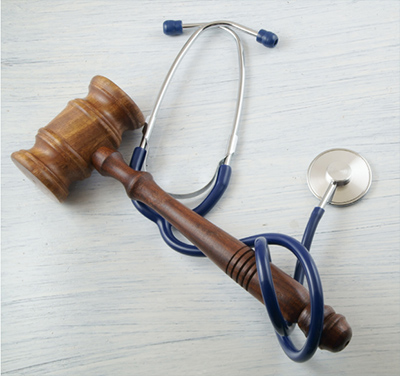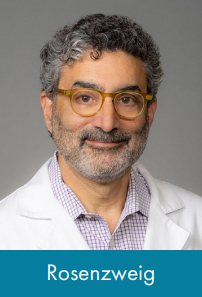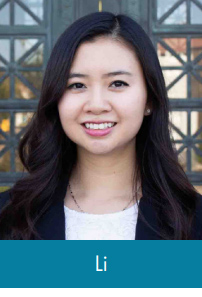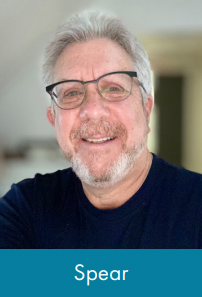A Step Toward Restoration

The honor board feels the early benefits of embracing a restorative justice model.
By G.K. Schatzman
What do you do when you mess up? How does guilt factor into repairing harm? And how, in communities of mission-minded students, can we center healing as a core part of justice?
Questions like these began to gather attention at Drexel University College of Medicine in the spring of 2022 as Steven Rosenzweig, MD, proposed integrating restorative practices into the college’s honor court system. Rosenzweig, a professor of emergency medicine (palliative medicine) and director of the Office of Community Engagement, oversees professionalism and bioethics education. He and fellow educators at the College of Medicine have brought a vision of medical training that fosters “intellectual, emotional, social and spiritual capacities of students to become excellent and compassionate physicians.” Implementation of restorative practices furthers that aim.

Rosenzweig led a task force of teachers, deans and students to study restorative practices and learn from the experiences of other medical schools to create a new and innovative approach to the peer honor court system. Consideration gave way to swift adoption for the following academic year, transforming the old honor court system into an honor board that implements restorative justice for violations of the College’s Code of Ethics. The difference? The court model existed simply to establish guilt or innocence. The restorative board model, on the other hand, goes a step further to identify harm done and establish a plan to repair it.
Now, at the end of their first year under the new model, Rosenzweig and Michael Spear, MD, professor of pediatrics and the honor board’s faculty advisor, reflect on the successes of the change, alongside outgoing honor board president Heidi Maupin, MD ’23, and fourth-year MD student Vivian Li, the honor board’s incoming president. “All medical learning and practice happen within community” Rosenzweig says. “Restorative practices have helped us achieve greater resilience for our community through building greater support for all parties and creating pathways to repair harm and restore trust.”
The model that the College’s honor court used to function on is not unlike the U.S. criminal justice system, Rosenzweig says. Following the priorities of what we generally call retributive (rather than restorative) justice, juries are tasked with determining guilt or innocence based upon the evidence presented. What happens next — often punishment or sanction of one kind or another — is out of their hands.

How It Used to Be
As the College gathered input from students and faculty about their experiences with the honor court, it became increasingly clear that people on both sides — those on the court and those summoned before it — found it distressing.
Li, a member of the court before becoming president of the honor board for the upcoming year, describes it as “severe and not very useful for students who understood what had happened and wanted to figure out how to move forward.”
Maupin agrees: “It was really difficult to have your peers come before a panel of the honor court members and feel so judged, and have to be so vulnerable in retelling the story of what they did wrong when they already knew that it was wrong. They had to relive that for really no purpose other than to go through the formal process as it was outlined in our handbook.” Having to pronounce judgment on a peer without being able to support their making amends was particularly stressful. “I think it was difficult to see a student make a mistake that you yourself could have made, and to be judged for it and not really have any ability to show understanding,” she says.

According to Rosenzweig, the restorative framework originates in the justice teachings and practices of diverse Indigenous communities across the Americas, Africa, Polynesia and other regions. “Restorative practices are rooted in deep, traditional understandings of community, accountability and social healing, and have gained some traction in Western criminal justice and educational contexts, including academic medicine.”
The honor board’s members and advisors believe that they work and they’re worth it. Still, the restorative pathway is not for every student. A student may always opt instead for an honor court hearing, to make the case before their medical school peers that they were not in violation of the Code of Ethics.
Restorative Justice in Practice

Students who opt in to the restorative process are not summoned as isolated defendants before a jury. Instead, they enter a room of peers and advisors ready to provide support and understanding through the process of moving from “what happened” to “what’s next.” Seats are arranged in a circle, rather than a usual court configuration. That process requires deep listening and responding to those who experienced harm or their representatives.
“We look at how to repair the harms and address the needs of those harmed, as much as possible. We come up with a plan,” Rosenzweig explains. “It could be future expressions of remorse and accountability to those not in the room. It could be some kind of restitution. It could be committing to a service that prevents someone else from causing harm in the future,” like creating a learning module for future students — something that has already been done. “And it always involves self-reflection on personal patterns that may have contributed to the event.”
For Li, the changes have made a palpable difference. “It was night and day,” she says. “The students who came in felt a lot more supported, and I think they could see how much we cared about them and how invested we are in the healing process. I enjoy being a part of that healing instead of just being part of a side that says if they’re innocent or guilty.”
As the board’s faculty advisor, Spear has noticed a difference. And folks from other parts of the College have taken note, too. “It’s really been a revolutionary advance for the medical school” and has rapidly generated buy-in and support by faculty and deans involved in assessment of student professionalism, Spear says. “It was like a no-brainer to them.”
Mistakes in Medicine
“Healing” is a word that came up a lot in these conversations about restorative justice. As it turns out, a justice process focused on healing could be especially vital for students training to practice medicine — a field where changing how we address mistakes means real improvements in patient outcomes. Spear, who throughout his career has run debriefing sessions after critical health care incidents, makes an analogy between restorative justice and the recent shift in the culture around medical mistakes following a seminal editorial from Dr. Albert Wu1 in The BMJ, “Medical Error: The Second Victim.” “The culture of medical mistakes in health care became less punitive and more problem-solving, so more people were willing to admit that they made a mistake,” Spear explains. “Restorative justice is sort of like that debriefing process.”
“If I inadvertently commit a medical error, I need a way to repair harm and move through, and integrate that story into a life story of a devoted physician who brings healing into the world,” Rosenzweig explains.
As Maupin points out, the psychological differences in how we frame that narrative directly impact clinical practice. “If we make a mistake [in clinical practice] and don’t really feel like we’re able to move past it, we become really ineffective — especially ineffective in showing compassion to both ourselves and other people,” Maupin says. “If we leave students feeling undeserving to be in medicine because they made a mistake during medical school, that is really a disservice. It’s about showing the level of compassion to ourselves in medicine that we show other people.”
Building Up
Seamless support from administration in adopting the new system just months after its proposal has been crucial. “I think it’s so easy for administrators to just say no. The fact that people saw it as valuable so quickly and were asking how we can make this work instead of coming up with ways why it can’t work is really honorable,” Maupin says. “I think people need to look to this instance as an example for how important it is to approach institutional change with that mindset of ‘How can we make it work?’”
The honor board will continue to build on the past year’s progress. For Li, the incoming president, increased awareness of what this restorative justice model looks like is an important step in demystifying the honor board process so that students feel comfortable and know what to expect going in. Rosenzweig notes that restorative practices such as team-based circles and community agreements are being widely introduced into the MD curriculum. “Restorative justice is just one part of a restorative frame that builds community,” he explains. “Beginning their first week of medical school, our students learn the language of community, inclusivity, accountability and repair. This helps us learn, grow and flourish together.”
Reference
1. Wu, A. “Medical Error: The Second Victim.” BMJ 2000, 320:726: https://www.bmj.com/content/320/7237/726
Back to Top